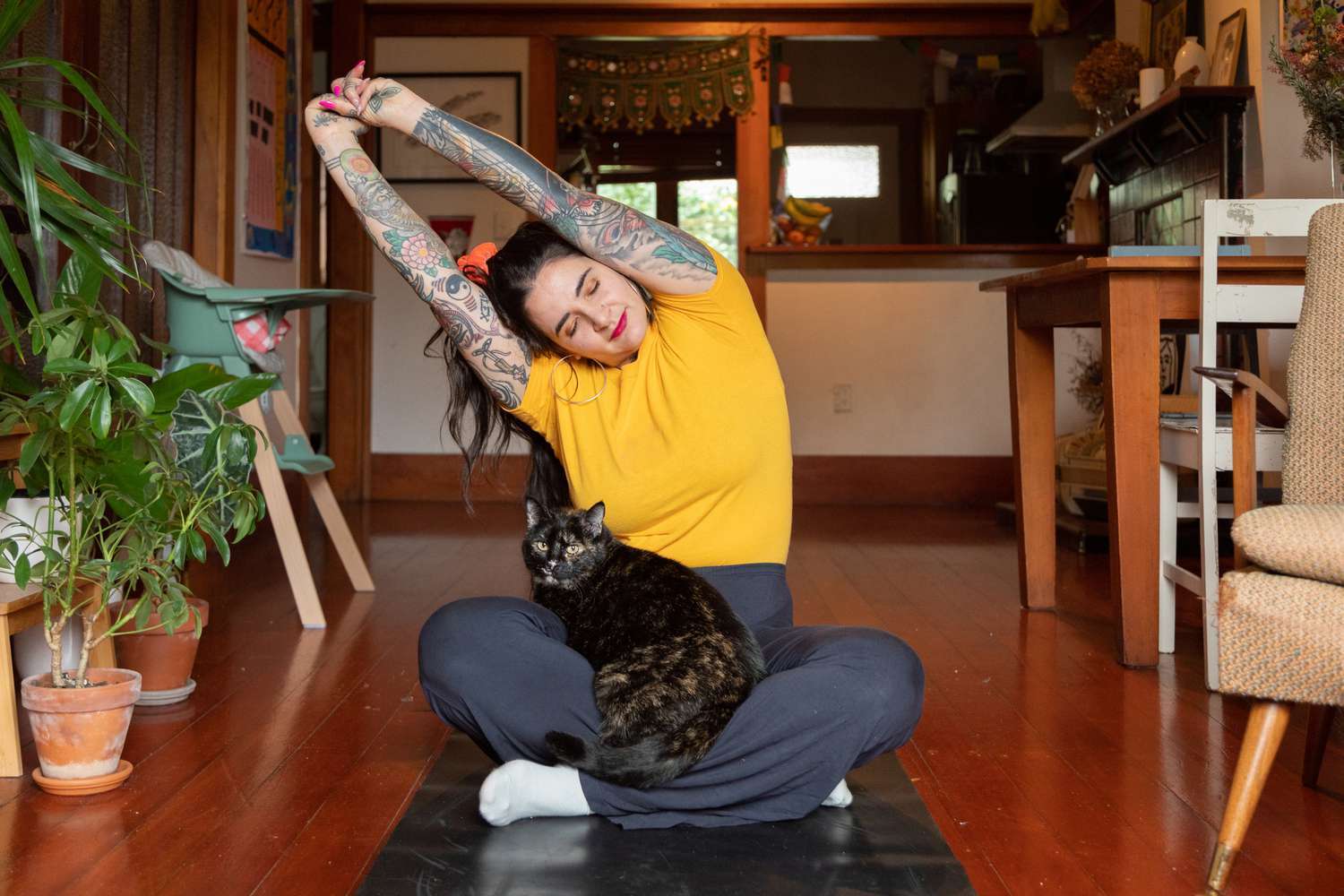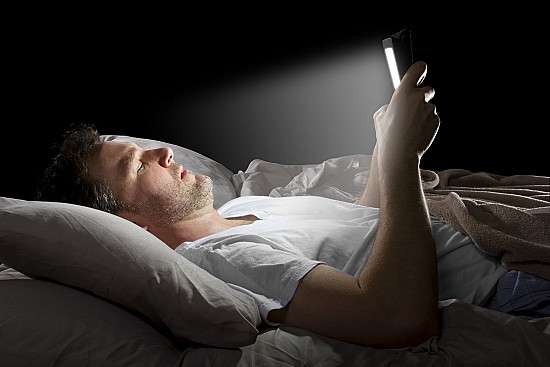Therapy is expensive. Sliding scale payments, insurance and online therapy options can make it more affordable, but the fact is, therapy is still out of reach for a lot of people. Traditional therapy can cost anywhere from $100 to $200 per session without insurance.
Online therapy services like BetterHelp and Talkspace have made therapy more affordable, at around $60 to $90 per session. Still, of the one in five adults who live with mental illness, only 20% were in treatment in 2020, according to the US Centers for Disease Control and Prevention.
Therapy is the gold standard for mental health treatment. But sometimes, therapy isn’t available, whether because of location or finances. Thankfully, there are things you can do to improve your mental health without spending money.
Use mental health apps to track daily progress
Mental health apps offer resources to people who otherwise couldn’t get them. While they’re not a substitute for therapy and can’t diagnose conditions, mental health apps like Moodfit and Sanvello are great tools to use on your mental wellness journey. The best mental health apps will help you relieve stress and anxiety and teach you how to manage symptoms in the future.
There’s a lot of variety in what these apps offer and the features that are built in. Many offer a great catalog of educational resources to help you learn about conditions and adapt coping strategies to manage them daily.
Mental health apps can also be a reminder to check in on yourself. Most send push notifications throughout the day, which can be used as an indicator to stop and assess how you’re feeling.

Wiphop Sathawirawong/Getty Images
Implement cognitive behavioral therapy strategies on your own
Cognitive behavioral therapy is commonly used to treat depression, anxiety and addiction. CBT strategies and tools are intended to be taken outside of therapy sessions and used in daily life.
It’s called self-directed therapy. Again, it isn’t a replacement for traditional therapy with a professional, but it can supplement your mental health efforts when you don’t have access to talk therapy. This self-help strategy is best reserved for those with moderate symptoms that don’t affect daily tasks.
A systematic review of 33 studies found that self-help treatments can decrease anxiety and depression. Self-directed therapy results were “moderate,” according to the review. So people didn’t feel 100% better, but they reported feeling less anxious or depressed. If you’re interested in self-directed therapy strategies to improve your mental well-being, we recommend checking out the Behavioral and Cognitive Therapies list of books. The books on the list have received a “seal of merit.”
Common self-directed therapy techniques:
- Journaling: Writing down your thoughts and feelings and reflecting on them can help you identify negative thoughts and behavior patterns. Once you’re aware, you can take meaningful steps toward making changes.
- Guided courses: With self-directed therapy, you have to start somewhere. Guided courses can help you learn methods and tactics for daily management. You can consult the National Alliance on Mental Illness for its mental health education directory.
- Mental health apps: Many mental health apps use cognitive behavioral therapy techniques to reduce anxiety and help manage symptoms

Getty Images
Stay connected to others
It’s important to connect with other people, especially those experiencing similar things. Studies show that connecting to others can provide a sense of meaning and purpose and decrease loneliness. Group therapy or support groups are typically led by a mental health professional or group leader and can be low-cost or free. Whether it be friends, family or strangers, sharing your feelings and experiences is essential.
You also can use the Substance Abuse and Mental Health Services Administration website to locate community resources near you.
Connections with people aren’t the only ones that can help improve your mental health. Pets and animals can reduce stress and anxiety levels. Take some intentional time to hang out with your pet — play with your dog, hug your cat. If you don’t have a pet, you can volunteer at a local animal shelter or humane society. Fostering or pet-sitting animals is also an option.
Practice mindfulness and meditation
Meditation has a history that stretches back thousands of years, but it’s become an extremely popular stress-relieving practice in the last few. Mindfulness helps you become more attuned to what you’re feeling and thinking, which helps you manage your thoughts and emotions more effectively, rather than becoming overwhelmed by them. Mindfulness uses techniques like meditation and breathwork to improve your mental health.
Mindfulness can help you manage symptoms of anxiety and other mental health disorders by helping you understand and cope with what you’re feeling. Studies show that meditation can help reduce stress, alleviate symptoms of depression or anxiety and help you sleep. The focus is on mind and body integration, which can help you enhance your mental well-being.
You can also use meditation apps to reduce stress and help maintain your mindfulness regimen. These free or low-cost apps are great for beginners.
Read more: Headspace Review: Get Tools for Mindfulness, Meditation and More for Just $5 a Month
Other practical tips to improve your mental health without therapy:

Getty Images
When should I see a therapist?
Self-directed therapy and well-being tactics are extremely useful, but they’re not the be-all and end-all in mental health. Face time with a licensed therapist is essential for those with severe conditions and symptoms.
The first thing you should do is check your insurance. Employer-provided insurance and Medicaid may cover screenings, psychotherapy and counseling. Your insurance coverage will depend on your state and your health plan, but many plans include mental health coverage for in-network therapists.
Read more: How to Find the Best Therapist Near You
Your finances shouldn’t stop you from getting the help you need. It may take some research into therapists and programs, but there are low-cost options.
- Sliding scale payments: Some therapists offer sliding scale fees — you pay what you can afford. The cost will be based on your income. Not all therapists offer this, but many do.
- Low-cost or free services: Some therapists offer low-cost or free counseling for individual and group sessions. If you live near a college or university, the graduate department may offer free or discounted therapy sessions.
- Community health centers: Community mental health centers assist those in surrounding areas.
- Local and online support groups: Local organizations and volunteers in many areas offer support groups for things like grief and addiction. Use Mental Health America’s list of support groups to find one that best fits your needs. You can participate in a peer-led support group through the National Alliance of Mental Illness (NAMI).
See also
The information contained in this article is for educational and informational purposes only and is not intended as health or medical advice. Always consult a physician or other qualified health provider regarding any questions you may have about a medical condition or health objectives.
Practice mindfulness meditation
Mindfulness seems to be quite the buzz word lately, and for good reason. This form of meditation can help you manage symptoms related to anxiety, depression, and other mental health issues.
The goal of meditation practice is to be aware, observe and notice thoughts, feelings, and the state of your body without becoming reactive or fused with them. Getting good at recognizing this takes some time but once you do, it can help reset the negative messages that play over and over again in your head.
There are a ton of mindfulness apps that will guide you through daily meditations including Headspace, Calm, and Stop Breathe, & Think.
Mental illness is common in the U.S., with nearly 1 in 5 adults living with a mental illness in 2020. But only about 20% of people living with mental illness are being actively treated for their condition.
People are sometimes unable to commit to therapy or other treatments for a variety of reasons, including lack of health insurance or a shortage of care providers. There is also a recent surge of people seeking mental health services, resulting in long waiting lists.
With rising costs, issues accessing care, or long wait times, you may wish to seek alternative therapeutic options. Read on to learn more about complementary therapies and other strategies to improve mental health without counseling.
![]()
Jessie Casson / Getty Images
Complementary Therapies
Complementary treatments are approaches to health that occur alongside conventional medical treatment. Studies show that complementary therapies positively impact mental health disorders, particularly anxiety and depression.
Some complementary approaches to consider include:
- Yoga: In a 2020 study, researchers found that yoga as a complementary therapy is effective in both managing and reducing anxiety and depression. Researchers suggested daily practice, but indicated more research needs to be done to determine exactly how many times per week is most effective for anxiety and depression.
- Dance: The flow of somatic (body-based) movements create additional outlets for expression and emotion, which may bring new insights that might not be as available through language-based talk therapy. Synchronizing with your own physical sensations may help your physical and mental health.
- Art: According to one study, art (particularly art therapy) can offer significant benefits to minimize symptoms and maximize the functioning of those living with mental illness.
- Music: Research indicates that music therapy is a valuable method of support for people living with mental illness and mental disorders.
- Meditation: Evidence-based research supports that meditation reduces stress, anxiety, depression, insomnia, and cardiovascular risk.
- Exercise: Physical activity has been proven to help improve mental health symptoms. A large 2018 study of 1.2 million Americans found that individuals who exercised experienced around 43% fewer days of poor mental health per month than those who did not exercise.
Cost-Saving Strategies
Cost is already a barrier to obtaining therapy, so when complementary therapies add an additional cost burden, there are creative ways to incorporate self-care methods with low or no-cost options.
- Community centers: Check out your local community center for free or low-cost yoga classes, exercise classes, and even art or dance classes.
- Online: There are numerous free exercise, dance, yoga, and art offerings online.
- Local parks: Local parks sometimes offer free yoga classes and may even offer other exercise classes for reduced or no cost.
- Churches: Churches sometimes offer exercise and yoga classes for free or with minimal cost.
- Libraries: Head to your local library and see what community offerings they may have.
Mental Health Apps
From mindfulness tips to deep breathing to cognitive behavioral therapy techniques, there are numerous mental health apps worth exploring, and many of them are free.
- Calm: Includes meditation, relaxation music, sleep stories to help you fall asleep, and other features designed to help with anxiety.
- Headspace: Includes mindfulness-based guided meditations, sleep stories and music, and mood-boosting workouts.
- Moodfit: Includes cognitive behavioral exercises to process intrusive and distorted thoughts, and helps you track your mood over time.
- MoodMission: This evidence-based app gives tips and strategies to help cope with low moods and feelings of anxiety.
- Happify: Includes science-based games and activities to help you overcome negative thoughts, reduce anxiety, and manage burnout.
- Shine: Designed as an inclusive, daily self-care app that includes daily check-ins, meditations, and community support for BIPOC individuals.
When to See a Therapist
When mental health symptoms begin to disrupt your daily life and functioning, it’s a sign that you should consider seeking professional treatment. Remember that this is not a sign of weakness or lack of willpower.
If you are experiencing any of the following, consider contacting a mental health provider:
- Insomnia, trouble sleeping, excessive sleeping, or nightmares
- Difficulty getting up or accomplishing routine daily tasks
- Loss of interest in activities that you usually enjoy or isolating from others
- Thoughts of suicide or self-harm
You can also contact the Substance Abuse and Mental Health Services Administration (SAMHSA) National Helpline online or call 1-800-662-4357 for more information on how to find support and treatment options specific to your geographic area.
If you are having suicidal thoughts, dial 988 to contact the 988 Suicide & Crisis Lifeline and connect with a trained counselor. If you or a loved one are in immediate danger, call 911.
Journaling
Writing down what is bothering you can be a helpful therapeutic tool. It may even reveal new insights.
In a study of mothers under stress while supporting adult children with substance use issues, researchers found that journaling improved their emotional well-being, reduced stress, and offered new insight and changes in perspective.
Another study indicated that journaling can relieve stress and enhance reflection and perspective. It has become a frequent tool for medical residency programs, due to high rates of burnout among medical residents.
Self-Help Books
Self-help books offer tools and insights for mental well-being. Selecting a book can be tricky, because each person experiences them differently. A book that may change one person’s life could be a dull read to someone else.
Here’s a few tips on finding a fit in self-help books:
- Get recommendations: Ask a therapist, counselor, or another mental health professional what they would recommend for you to read.
- Read reviews: Lots of online sites have detailed reviews that can give you an idea of what others think of the book.
- Sneak-peek: Take some time at the library or bookstore to thumb through the book to see if it will be a good fit. Check online for chapter downloads or an online view of the first few pages to see if the book is what you’re looking for.
Support From Friends and Family
Studies consistently show that support and connection are crucial to our mental well-being. Connections with friends and family are important for mental health because they provide a sense of meaning, connection, support, and purpose.
One study indicates that building, restoring, and sustaining our social networks and connections support mental health and can also help overcoming loneliness.
Pet Therapy
According to research, pets can help reduce both physiological and mental stress, and improve anxiety levels.
If you don’t have a pet, there are other ways to make emotional connections with animals, including:
- Volunteer: Local animal shelters are often in need of sponsors and volunteers to help care for the animals.
- Humane society: Contact your local humane society for ways you can help with animals in your community.
- Fostering pets: If you want a pet but can’t make a long-term commitment, perhaps fostering pets and helping re-home them might be an option.
- Pet sitting: Consider becoming a pet sitter so you can spend time with pets without the long-term commitment.
If you have a pet, make the extra effort to spend time slowing down and connecting with them. Animals are very much in the present moment and can help bring you there too.
Summary
People may be unable to participate in or commit to therapy for a variety of reasons, including costs, lack of insurance, and growing demand. Alternative options to therapy include exercise (like yoga and dance), meditation, art, music, journaling, and reading. Mental health apps are available to help support you as well. If available to you, animals can also be a great resource for emotional connection.
A Word From Verywell
When therapy isn’t an option, there are are other methods that can complement mental health services. Activities like yoga, meditation, journaling and more have been proven to help improve emotional well-being.
If you are in need of mental health services and cannot afford them, most communities offer free and low-cost community services. Contact the Substance Abuse and Mental Health Services Administration (SAMHSA) National Helpline at 1-800-662-4357 for more information on how to find support and treatment options in your area.
Frequently Asked Questions
-
Why is mental health important?
Mental health encompasses our psychological, emotional, and social well-being. It’s important because it impacts how we feel, think, and behave. Mental health also impacts how we manage our stress and emotions. Finding the right strategies and techniques that work for you can improve your overall well-being.
-
What are the key signs of stress affecting mental health?
Stress can impact both mental health as well as physical health. Stress may be impacting your mental well-being if you experience:
- Strong emotional responses and/or feelings of sadness, numbness, worry, frustration, fear, and anger
- Changes in energy, desire to do things you normally do, interests, and appetite
- Trouble concentrating or making decisions
- Difficulty sleeping, having insomnia, and/or nightmares
- Physical reactions including headaches, body aches, joint aches, stomach aches, and skin rashes
- Urge to engage with substances such as alcohol, tobacco, or drugs
-
How does mental health affect physical health?
Mental health has an impact on physical health. For example, depression increases the risk for several health issues including diabetes, heart disease, and stroke. Further, having a chronic health condition can increase the risk of having a mental illness.
-
What’s the difference between therapy and counseling?
Counseling and therapy are frequently used interchangeably, and there can be some overlap, which can lead to confusion. There is, however, a slight distinction between the two terms:
- Counseling: In general, counseling often focuses on specific issues. It may help a person address a particular problem. In some cases, counseling may be more short-term than therapy.
- Therapy: Therapy may be more long-term and focus on a wider variety of issues. It may address patterns in behaviors and past childhood issues.
However, all of this can vary widely among mental health practitioners. It may be best to ask a potential mental health provider about their therapeutic style.
Studies indicate that the relationship between therapist and patient is what has the most impact on outcomes, independent of the type of therapeutic approach. So whether it’s therapy or counseling, short-term or long-term, or something in between, what matters most is how you connect with the therapist.




